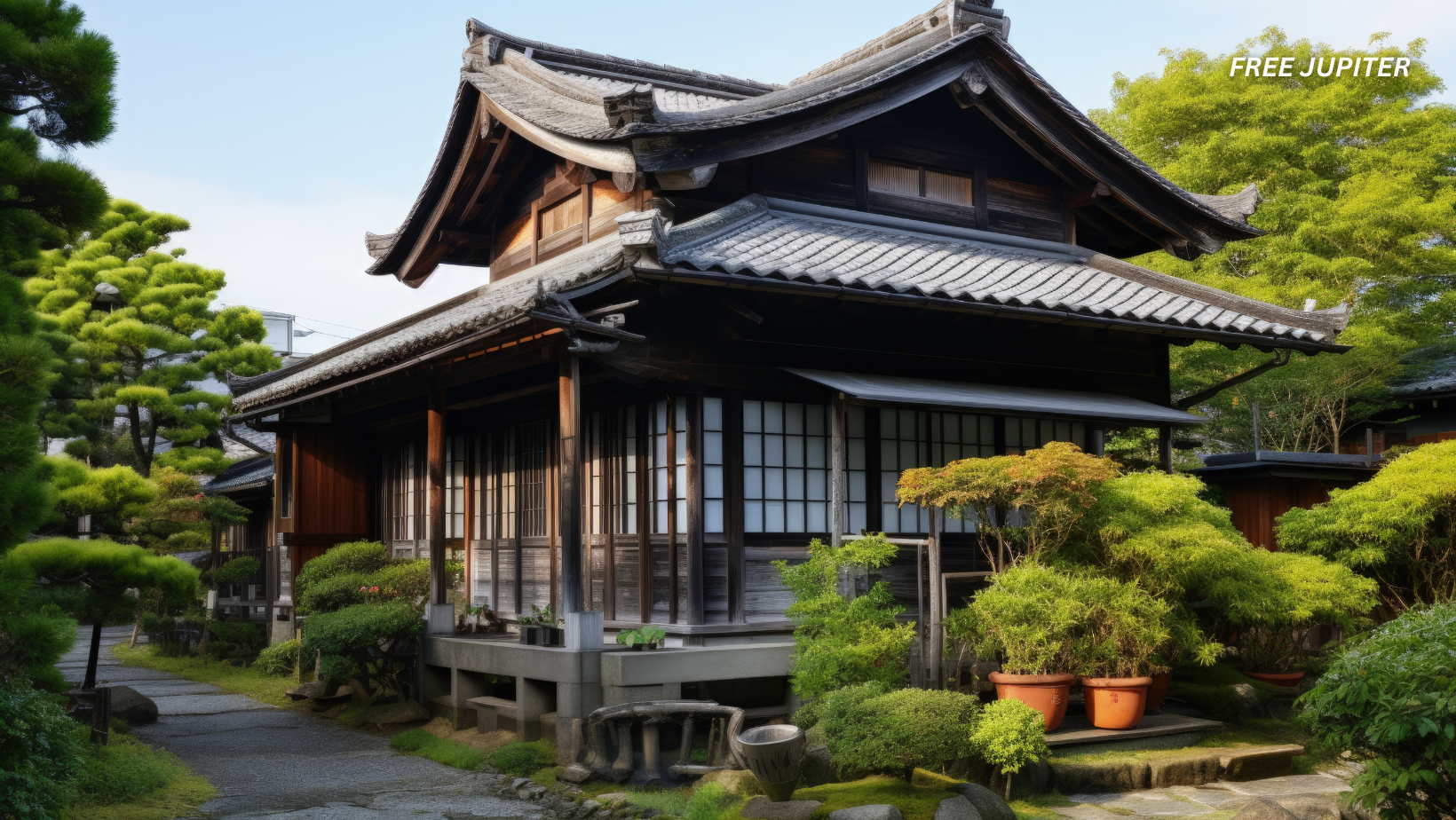Friendly Note: FreeJupiter.com shares general info for curious minds 🌟 Please fact-check all claims—and always check health matters with a professional 💙
In the heart of rural Japan, once-vibrant towns now echo with silence. Roads lined with moss-covered roofs, faded signs, and shuttered windows tell a quiet, haunting story. These aren’t ghost towns from some long-forgotten past — they’re the result of a modern demographic puzzle. As of the most recent count, over 9 million homes in Japan are sitting empty, a staggering number that makes up around 14% of all residential properties in the country.
This isn’t just a case of a few forgotten villages or old countryside homes left to the weeds. It’s a nationwide trend that speaks volumes about Japan’s changing society — one that’s growing older, smaller, and increasingly urban.
The Numbers Behind the Emptiness
Let’s unpack this. In 2018, Japan had around 8.49 million vacant homes. Fast forward just a few years and that number has jumped to 9.06 million. And experts say this is just the beginning. By the early 2030s, nearly one in every three homes in Japan could be empty.
These deserted dwellings — called “akiya” — aren’t limited to obscure mountain towns either. They can be found in suburban neighborhoods, coastal fishing villages, and even within driving distance of bustling cities. Many are still structurally sound, but slowly falling apart from neglect, lack of use, or simply the passing of time.
So, Why Is This Happening?
Japan’s housing crisis isn’t being caused by a market crash or housing bubble like in some other countries. Instead, it’s rooted in three interconnected forces:
Read more: Lucid Dreaming Isn’t Just Trippy—It’s Power Can Transform Your Entire Life, According to Experts
1. A Rapidly Aging Population
Japan has one of the oldest populations in the world. Nearly 30% of its citizens are over 65, and many older residents live alone in inherited or long-owned family homes. When they pass away, those homes often become part of complicated inheritance chains — and more often than not, they’re left empty.
Families may live far away or have no interest in maintaining the property. In some cases, no one even claims the homes due to the cost of taxes or renovations.
2. Extremely Low Birth Rates
Japan’s birth rate has been declining for decades. Fewer children being born means fewer future homeowners. With each generation, there are simply fewer people around to inherit, live in, or care for these homes.
3. Mass Urban Migration
Like many countries, Japan is seeing a sharp migration from rural areas to major cities. Young people are flocking to Tokyo, Osaka, and other economic hubs for education and jobs. This leaves behind towns with shrinking populations and aging residents. Once they’re gone, the homes — and the communities — are left behind.
What Makes These Homes Hard to Reuse?
At first glance, it might sound like an opportunity — millions of homes, just sitting there, could be used to ease housing shortages. But reality is more complicated.
- Many akiya are in bad shape. They’ve been left untouched for years, sometimes decades, and are often not up to modern standards for safety or comfort.
- Some are practically unsellable. The cost of repair may be more than the home is worth. In other cases, family members can’t agree on what to do with the property.
- Legal red tape adds more hurdles. Without a clear chain of ownership or formal will, these homes get stuck in limbo — no one’s using them, but no one’s legally able to fix or sell them either.
Read more: Scientists Say Mushrooms ‘Speak’ To One Another Using Up to 50 Distinct Words
The Hidden Dangers of a Silent Housing Crisis
Beyond being an economic headache, the growing number of abandoned homes brings a host of hidden challenges:
- Fire Risk: Empty homes are often filled with flammable debris, old wiring, and unattended structures — all of which increase the chance of fires.
- Health Hazards: These properties can become breeding grounds for mold, pests, and stray animals.
- Declining Neighborhoods: Even one or two akiya can hurt a neighborhood’s appeal, driving down nearby property values and discouraging new residents or businesses from moving in.
- Erosion of Culture and Tradition: Many of these homes are located in areas rich with history and culture. As they fall apart, centuries-old traditions tied to those places quietly disappear.
Akiya Banks and Bargain Homes: The Government’s Response
In an attempt to turn this situation around, Japan’s government and local municipalities have created a system of “akiya banks” — online platforms that list abandoned homes for sale, often at shockingly low prices.
– Practically Giving Homes Away
Some homes are being listed for as little as $500 to $1,000 — and in certain cases, they’re being offered for free, especially to families or young professionals who agree to renovate and live in them.
– Tax Breaks and Incentives
To sweeten the deal, some local governments are offering tax breaks, relocation subsidies, or cash grants for people willing to move into and restore these homes. The idea is to bring new life into dying towns and keep local schools, shops, and clinics open.
– Creative Community Projects
In some regions, akiya are being transformed into:
- Artist studios and cultural spaces
- Cafés and coworking spots for digital nomads
- Guesthouses for domestic and international tourists
- Nature retreats and farming cooperatives
Real-Life Example: Okutama’s $0 Homes
In Okutama, a small town about two hours from Tokyo, officials launched a program where abandoned homes were listed for ¥0 (yes, free!) to encourage younger residents to return to the countryside. The only catch? New homeowners needed to commit to renovating the properties and living there for a certain number of years.
Some of these homes had been empty for decades. But thanks to fresh paint, community support, and a few modern touches, they’re now part of a small revival in the region.
Could This Happen Elsewhere?
Japan’s housing issue is unique in its scale and speed, but it isn’t isolated. Countries like Italy, South Korea, Spain, and even parts of the United States are facing similar demographic patterns:
- Young people leave rural areas for cities
- Older generations age out of homeownership
- Property is left behind, empty and falling apart
In Italy, for instance, several towns have tried to revive themselves by selling homes for €1 to foreign buyers — much like Japan’s approach.
The Bigger Picture: A Country in Transition
While the idea of “ghost homes” might sound spooky, the reality is more sobering than scary. Japan is facing a deep shift in how its people live, work, and connect to community. Empty homes are just one symptom of broader changes — and they pose tough questions for the future:
- Who takes care of places that people no longer live in?
- How can rural towns survive if no one moves back?
- And is there still a future for small communities in a big, urban world?
Japan may be the first country to face these questions on such a massive scale, but it almost certainly won’t be the last.
Read more: A Wolf And A Bear Were Recorded Traveling And Hunting Together
Final Thoughts: From Empty Houses to New Hope?
The rising number of abandoned homes in Japan isn’t just about bricks and mortar — it’s about people, choices, and change. Each empty house was once a place of birthdays, dinners, and memories. Now, many of them stand as relics of a time that’s quietly slipping away.
But in every abandoned doorway, there’s also potential. With creativity, policy, and a little imagination, Japan’s akiya problem might just offer a blueprint for revitalization — not only for itself, but for other aging societies around the world.
Because even the quietest homes still have stories left to tell — they just need someone to turn the key again.










